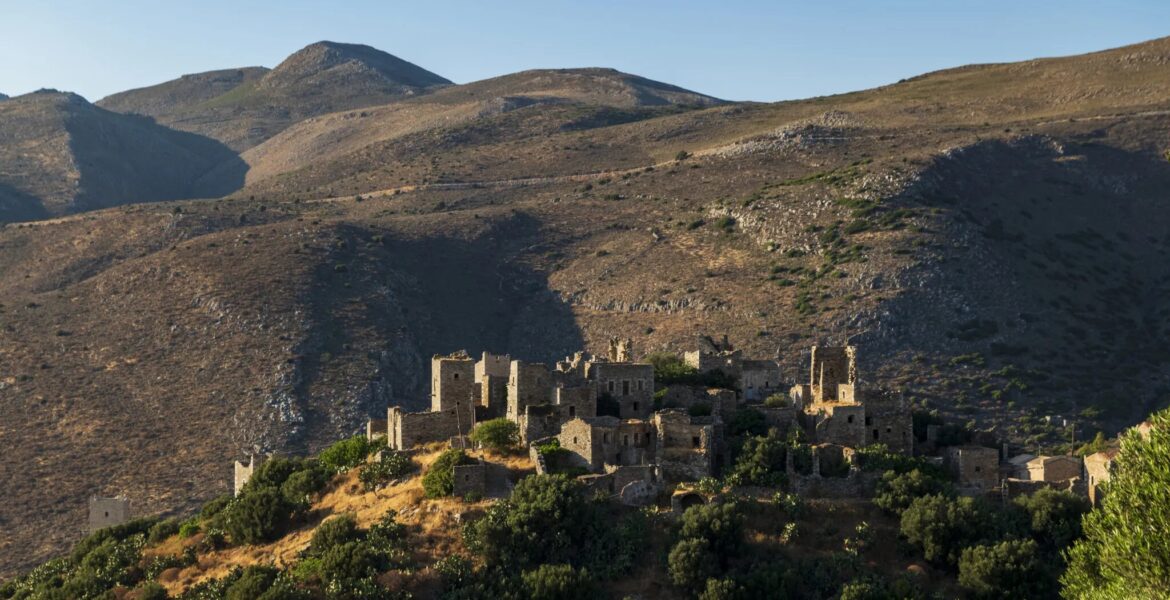A unique trip to the wonderful parts of Mani in winter, starting from Aposkeri Mani and ending in Prosiliaki
We may have associated Mani with our summer vacations and excursions, but in winter, it has an almost eerily charming beauty dominated by the rough stone landscape, the silence and the raging sea.
If the crowds, the sun and the heat are not the ideal conditions to get to know a region, then this winter season is the most suitable to discover Mani. A nice way to travel is to start from Aposkeri Mani, which overlooks the Messinian Gulf, and reach Prosiliaki, which overlooks the Laconian Gulf.
A first stop can be at the famous Kardamyli, with its wonderful stone-built houses and unpretentious beauty. Get off the public road and up to the old town of Kardamyli, to the north of the village, with its quaint old towers, small stone churches and the impressive towering 17th-century Mourtzinos Tower, which serves as a museum.
Among the most famous areas is Stoupa, a summer destination that gathers many people every summer. However, my favourite part of the area is the small port of Agios Nikolaos with its stone houses, old neoclassical ones and Syriza taverns on the beach road.
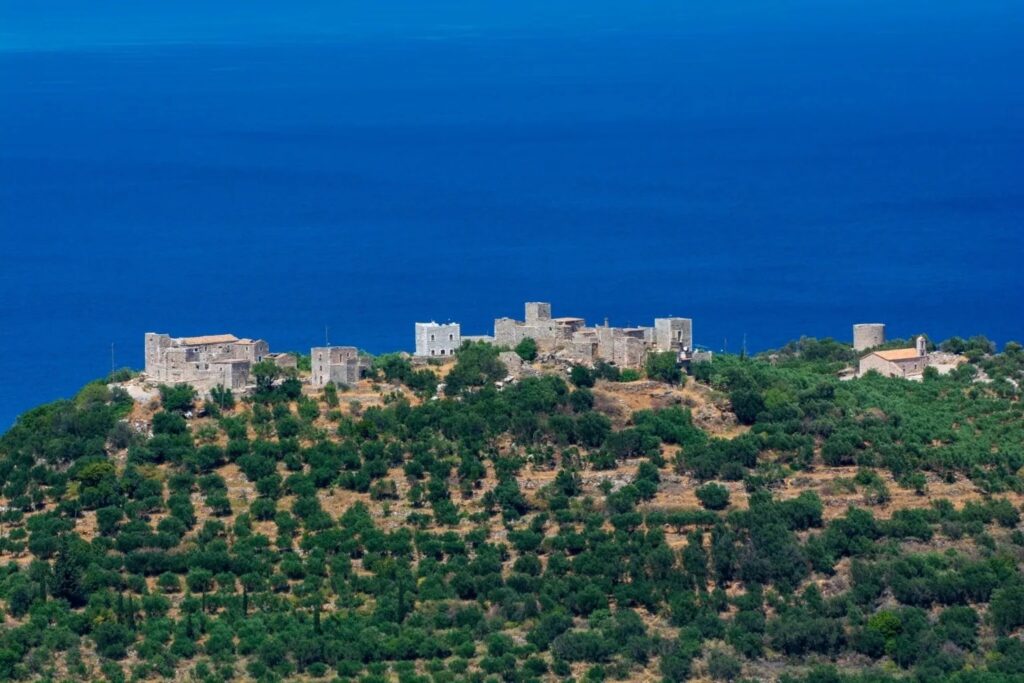
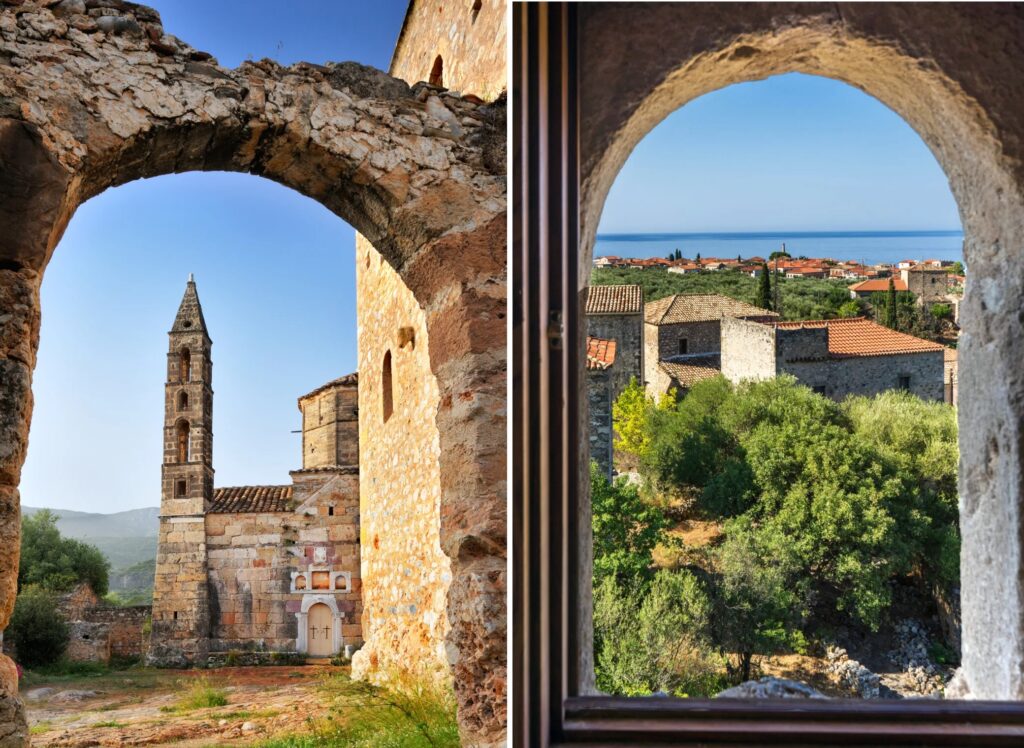
From there, you can move inland and reach the village of Platsa, the old capital village of the area, which is full of stone mansions. Here, the most important sights are the churches of Agios Ioannis, the small church of Agia Paraskevi from the 15th century, Agios Dimitrios dating between the 11th-12th centuries southeast of the village, as well as the 10th century Agios Nikolaos at the site of Kabinari.
After walking around the village, you will get into the car to drive south. On the way, make a stop at the stone-built village of Nomitsi.
Here, the Byzantine monuments are also noteworthy, such as the Church of Ypapanti with iconography, the Saints Anargyri and the Transfiguration of the Savior from the 11th century. From Nomitsi, you can go down the coastal road and reach the fishing village of Trachila, a small stone settlement for nice seafood.
The next stop is Oitylo, this wonderfully picturesque village full of maniac tower houses. Built on the slope of a hill, it has an amphitheatre view of the sea and is one of Mani's most famous holiday villages.
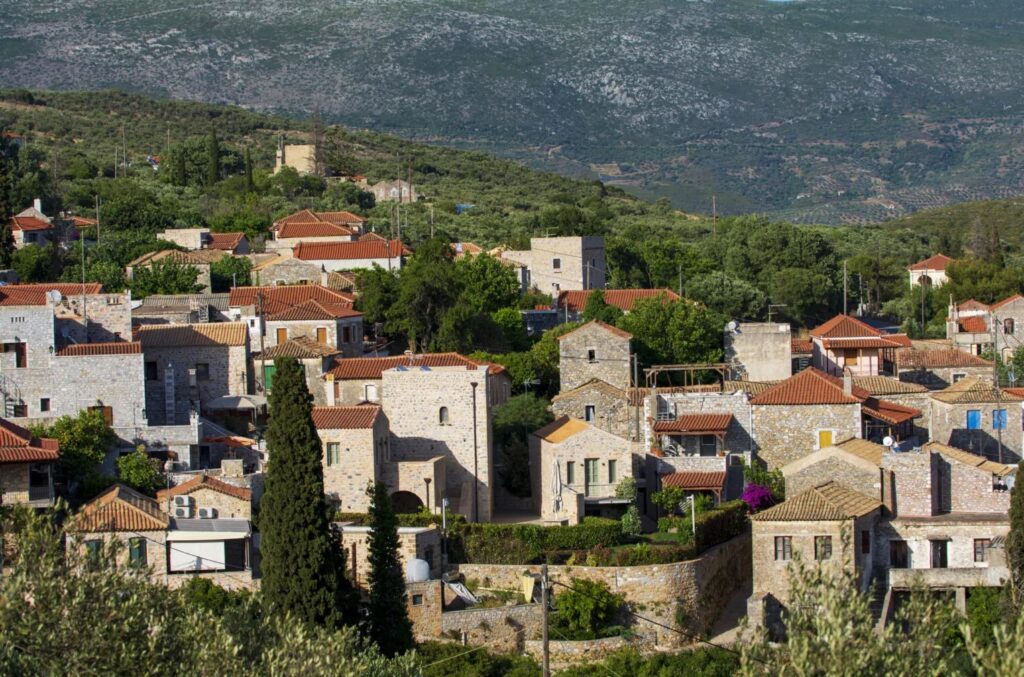
In winter, it has a wilder beauty; it is quieter and definitely more atmospheric. Lower down now, the Lilliputian Limeni is one of the most beautiful beach areas of Mani. A must-stop at the Tower of Petrobey Mavromichali, one of the protagonists of the Greek Revolution and ruler of Mani.

Areopoli is one of the most beautiful villages. A traditional settlement that every step in its narrow streets brings you back to 1800. When the imposing tower houses were full of life and when the Mavromichalai, an important family of Mani, ruled the area.

In the settlement, the small double church of Agios Charalambos and Panagitsa with frescoes from 1869 stands out, as well as several mansions such as Pyrgos Pikoulaki, a fortified Maniac residence, with a tower and a tower house where the Byzantine Museum of Mani is housed.
Very close are the caves of Diros, a real miracle of nature that you must see. The route to be visited is 1,500 metres, of which the first 1,200 are lakes and the rest land.
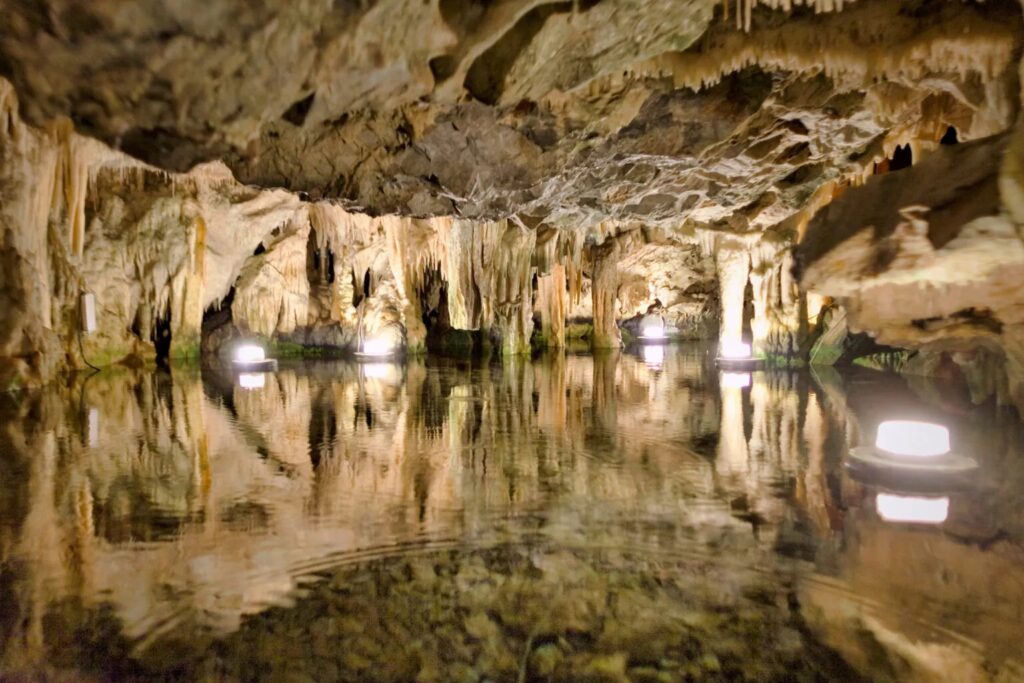
You will continue your journey south towards the Tigani Castle, the ruins of which are located on a small peninsula with an incredible sea view. To get there, you will need to do a short hike of about 2.5km, but it is worth it.
After your journey, the landscape becomes completely barren, full of stone, so much so that you dare someone have deliberately thrown it there.
Your destination is Gerolimenas. A small port, a stronghold of the Mania pirates, which has now become a popular holiday destination. The stone houses dominate here and remind us of old times. The meeting point is the port with the tavernas that naturally overlook the sea.
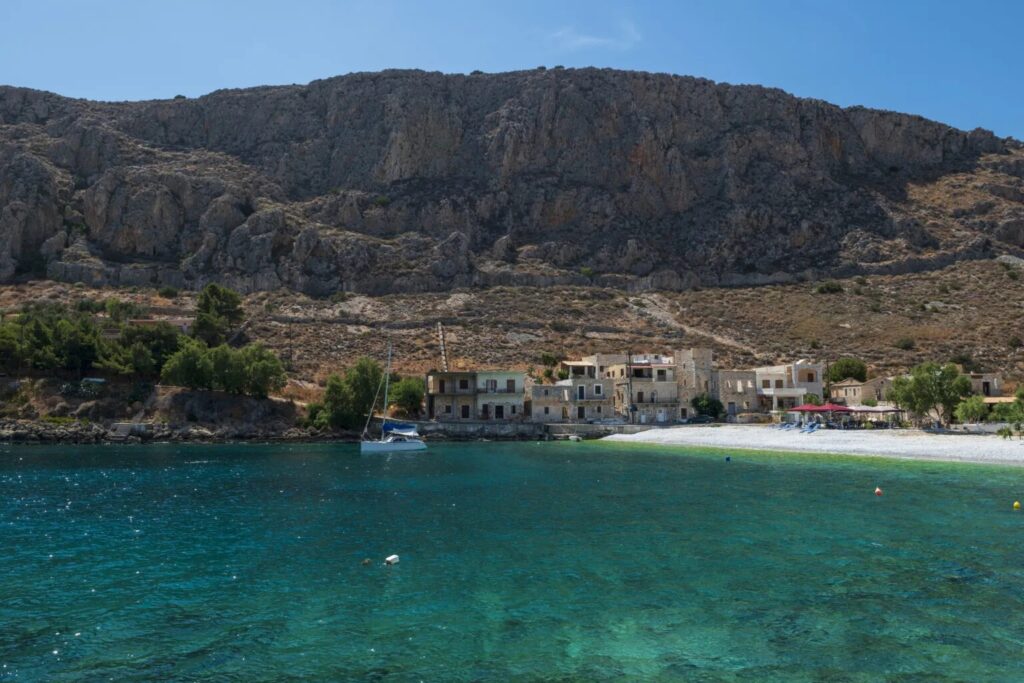
From there, you will head for Vathia, a small, practically abandoned village with an incredible view of land and sea, in which time has stopped. You will find two- and three-story tower houses among prickly pear, olive and pomegranate trees, most of them dilapidated but beautiful.
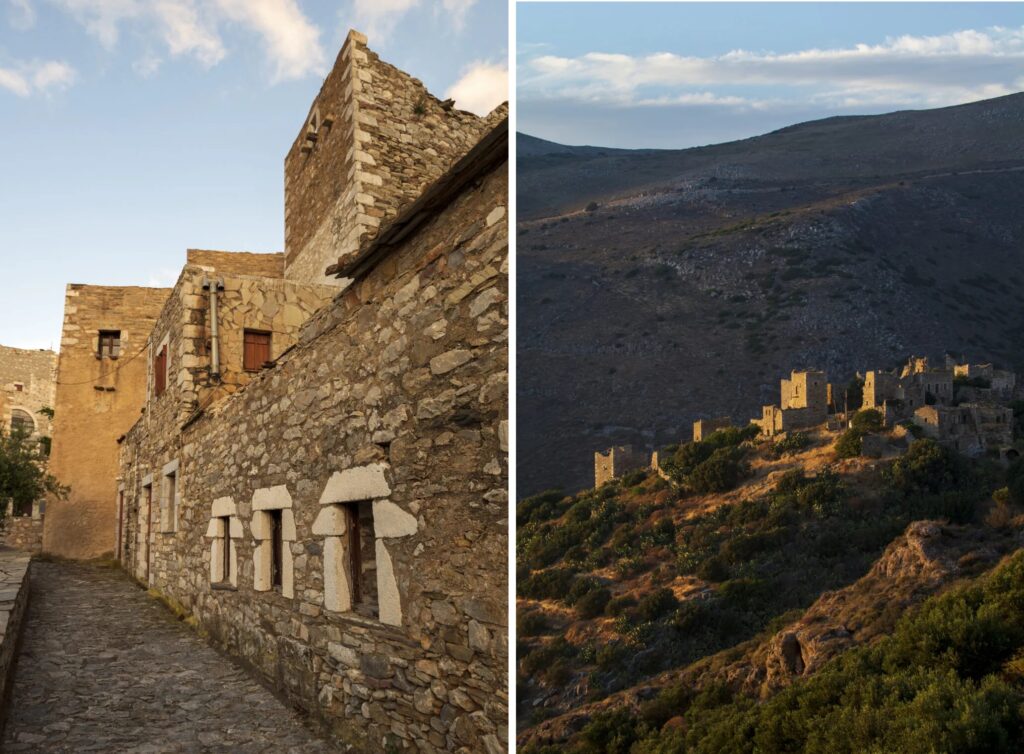
In recent years, however, there are also a few rented rooms. But before you get there, and if you have an appetite for twists and climbs, you will go to Mudanistika, about 10 km from Gerolimenas. And this village is practically abandoned, a ghost village that enchants with its view.
From Vathia and Mudanistika now, you will go all the way down to Kaap Taenarum. The southernmost point of mainland Greece and the Balkan peninsula stands at the edge of an impressive stone lighthouse.
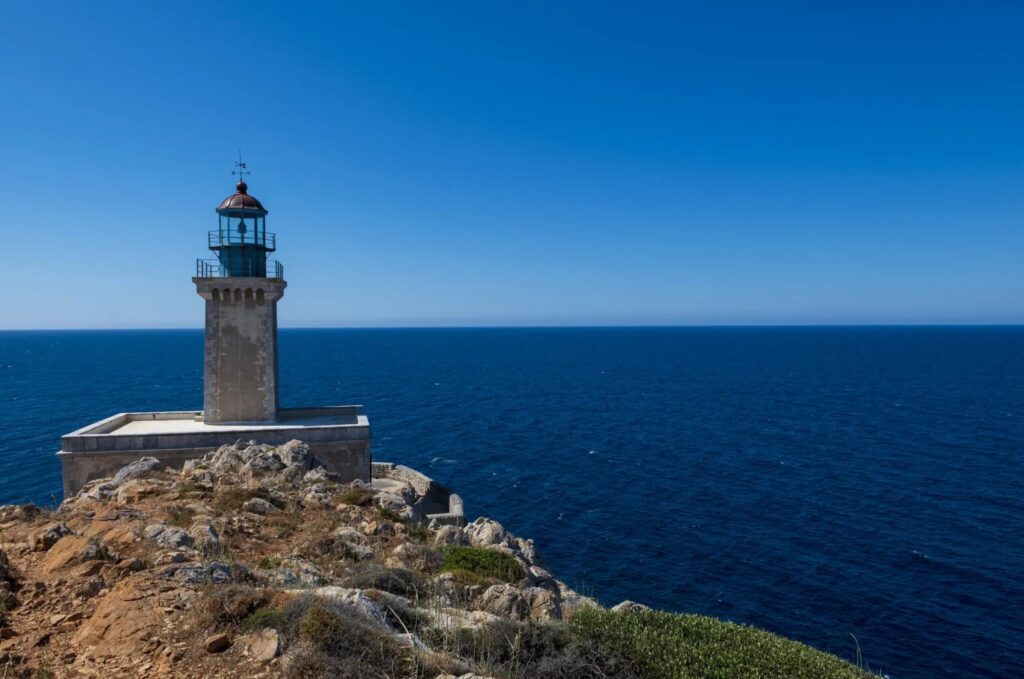
You will reach Kokkinogeia village by road and from there you will start walking. The path to the lighthouse is only 2 km. The lighthouse, also known as "Matapa Lighthouse", was built by the French in 1882; it has a height of 16 meters and a range of 22 nautical miles.
Note that next to the village, there is also a sanctuary dedicated to Temple of Poseidon (Tainaron), which dates back to the Classical Era, while a few metres further, there is still a mosaic floor of a house from the Greco-Roman era, which is worth looking for.
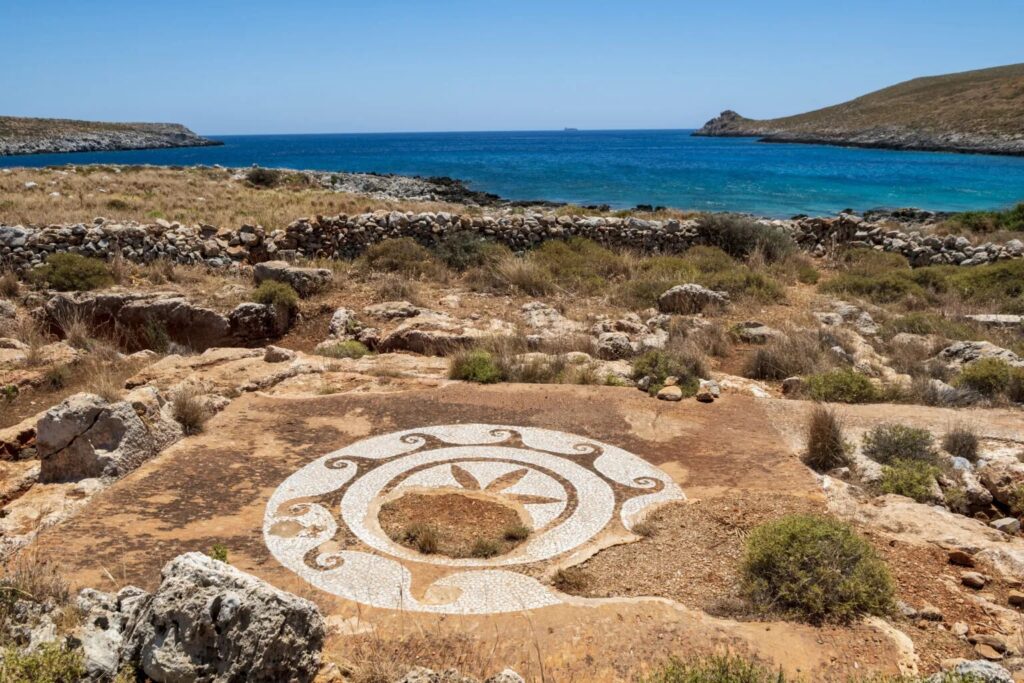
Passing to eastern Mani now, you will make a stop at the village of Laya, which does not lack the characteristic Maniatian architecture, but also at Flomochori, much further north with its towering stone towers.
Kefalochori of the region is Kotronas, a popular summer destination that preserves the traditional architecture to a good degree and where, among the modern houses, you will see tall towers and stone-built mansions. It also has a small port, west of which is the small peninsula of Skopa, connected to the mainland by a narrow strip of land.
In winter, the sea usually covers the land access, but if you can get this corridor open, it is worth a little tour there. Continuing north to reach the eastern border of Mani, take a short detour to the abandoned Monastery of Panagia Kotroniotissa.
Your tour of Mani ends with a visit to Gytheio, the large port and the centre of the wider area.
Behind it rises a verdant rock, and in front of it, the Laconian gulf. Its beachfront is decorated with well-kept mansions, while to the south of the port is the small islet of Kranai, which is connected to the mainland.
Here, you will see the particularly impressive Tower of the chieftain of Mani Tzanetakis Grigorakis, which today functions as a Historical Ethnological Museum (in winter, it is good to call before visiting, Tel: 2733022676), the small chapel of Agios Petros, a restaurant and the lighthouse 22 meters high overlooking the entire bay.
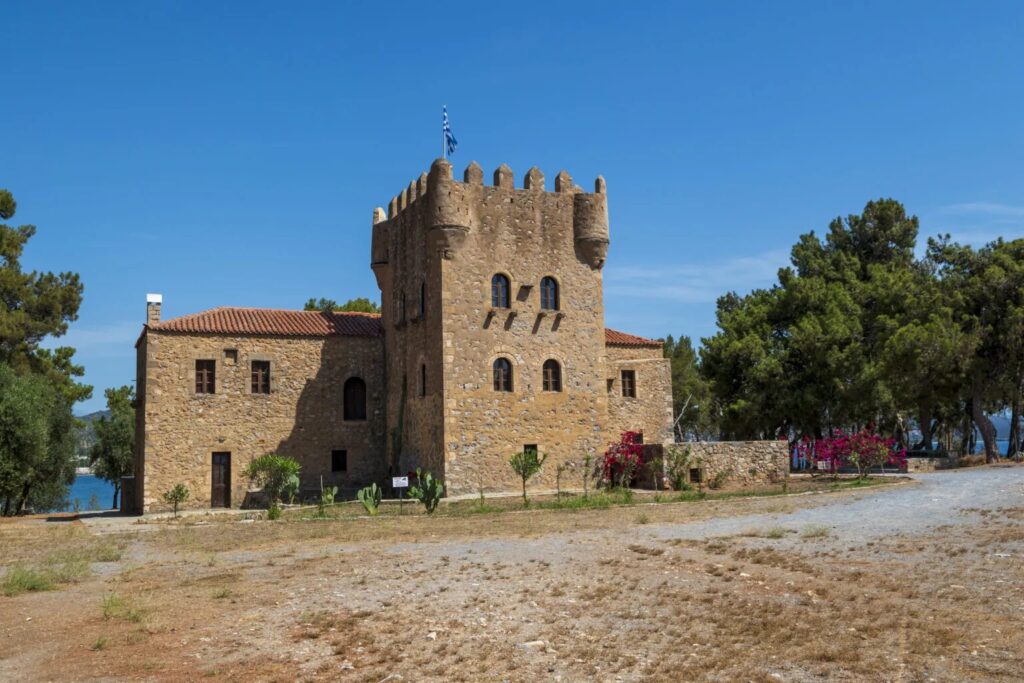
Other places worth visiting in Gytheio are the Girls' School built in 1886 and the Roman-era theatre. You can, of course, also start your trip to Mani in reverse, from Gytheio to Kardamyli or see only one part of it; it always depends on your mood and your time.
Accommodation
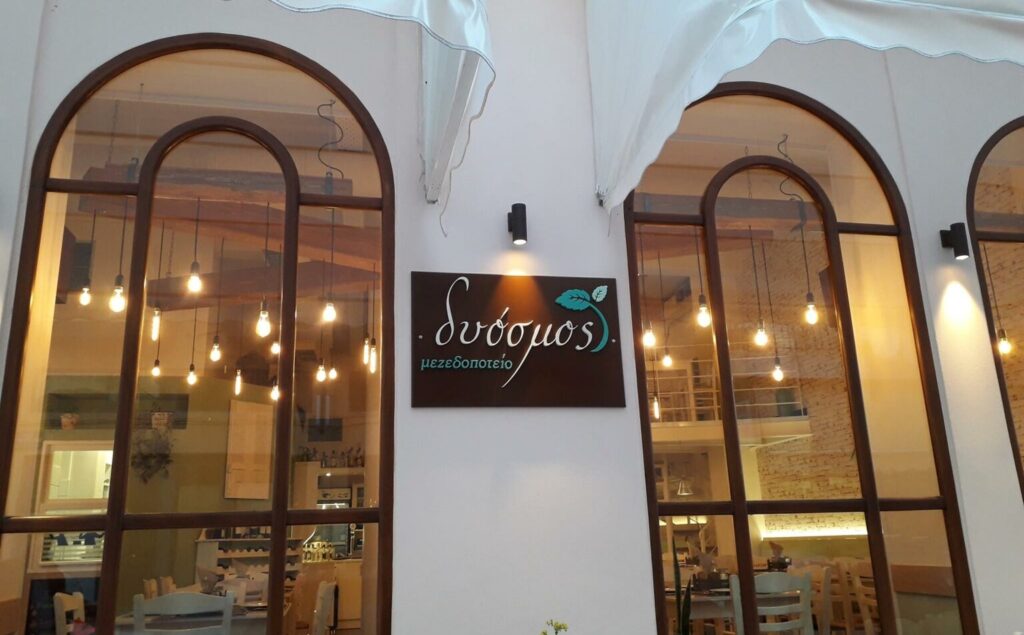
Kyrimai: a worthy accommodation option is Kyrimai, which will start accepting its guests from April. It is housed in a restored traditional building of 1870 on the rocks of Gerolimenas beach. The rooms and common areas stand out for their particularly careful aesthetics and discreet luxury (Gerolimenas, Tel: 2733054288 – 59330).
Kalamitsi Hotel: Stone complex with comfortable rooms in the main building and bungalows. The latter also has a kitchen (Katopin of consultation, Kardamili, Tel: 2721073131-3).
Maini Castle: at the city's entrance, it is housed in a building of traditional architecture with comfortable rooms with a light aesthetic (Fri.-Sat., Areopoli, Tel: 2733051238 – 51302).
Areos Polis Boutique Hotel is a stone building in the city's centre with classical decoration but a touch of romance (Areopolis, Tel: 2733051028).
Las Hotel & Spa: very close to the port and has a neat minimal aesthetic (Gytheio, Tel: 2733024610).
Food
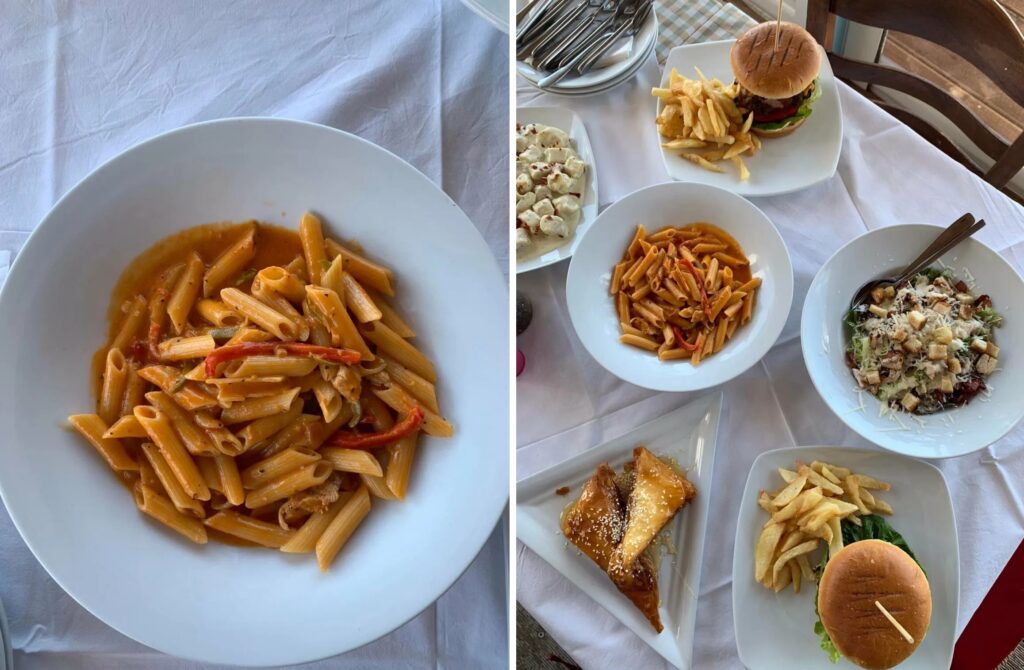
H Avli tis Giorgitsa: a new age cafe with a tasteful garden and a comfort menu (Fri.-Sun., Kardamili, Tel: 6942849549).
Melissa: simple tavern serving cooked and grilled meat, fish and seafood (Stoupa, Tel: 2721078156).
Mavros Piratis: fish tavern overlooking the sea on the main road. Fresh fish, seafood, appetisers, pasta, and soups (Neo Oitylo, Tel: 2733059363).
The Mavromichaleiko: roasts of the hour and traditional Maniac stews (Areopoli, Tel: 2733051585).
Saga: on the city beach, in a beautiful classic hall that serves fresh fish and seafood (Gytheio, Tel: 2733021358).
Diosmos is a neat restaurant with seasonal dishes (Gytheio, Tel: 2733024474).
Voula Akrivaki is a columnist for Travel.

